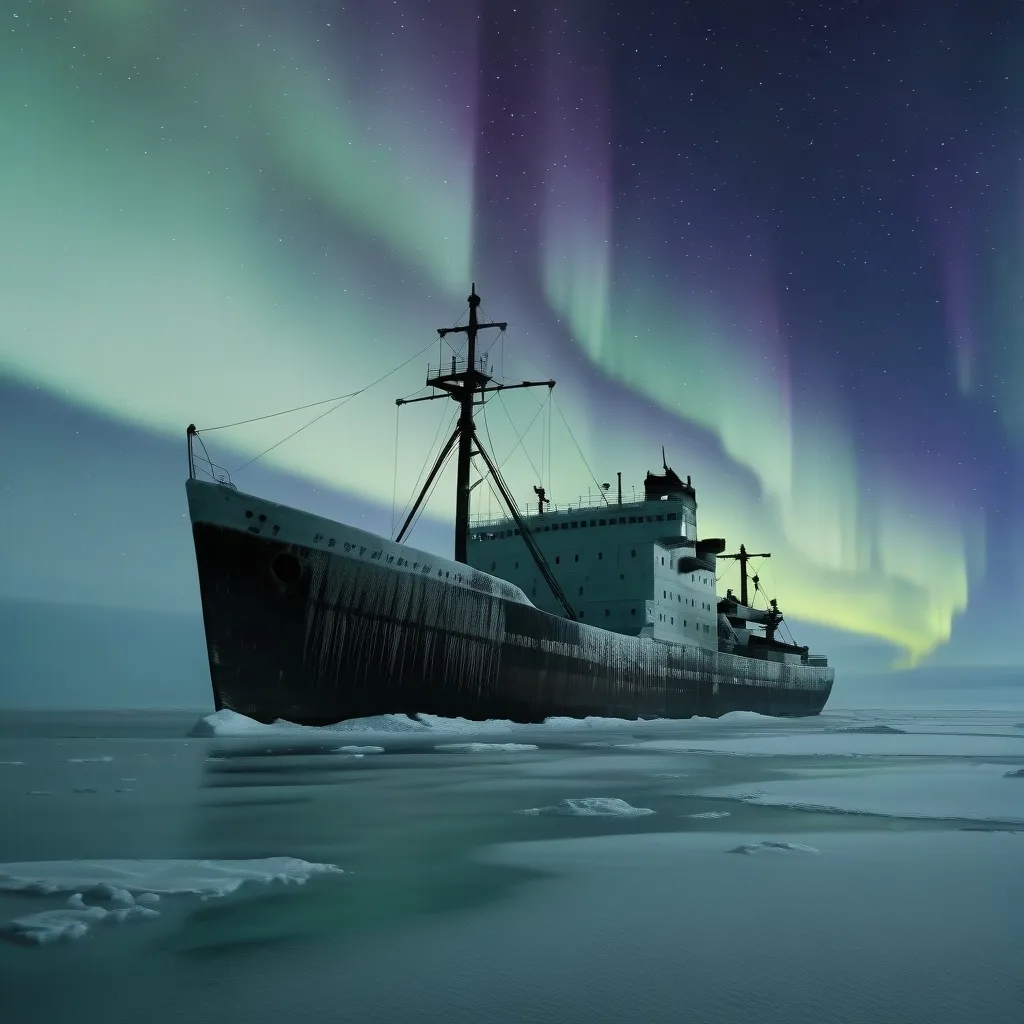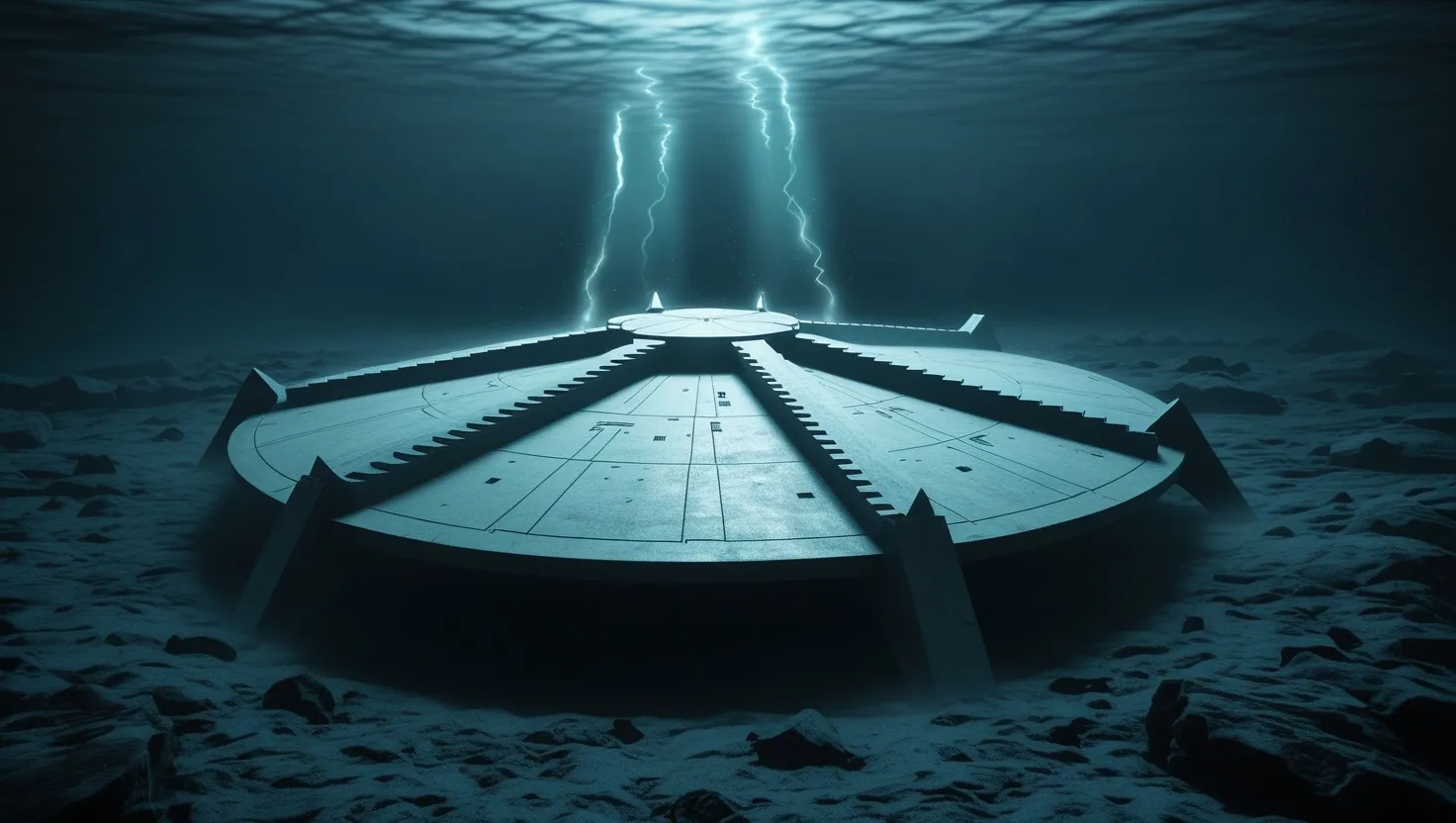The Ghost Ship of the Arctic: The Enigmatic Tale of SS Baychimo
In the vast, icy expanse of the Arctic, a legend persists - the tale of SS Baychimo, the ghostly vessel that refuses to sink. It’s a story that blends reality with myth, captivating imaginations for nearly a century.
Picture this: a sturdy cargo steamship, built in 1914, originally christened Ångermanelfven. She starts her life humbly, trading in the Baltic Sea. But fate had grander plans for her. In 1921, the Hudson’s Bay Company purchases her, renames her Baychimo, and sets her on a course that would etch her name in maritime lore.
Now, let’s transport ourselves to October 1931. Baychimo is on a routine trading run, her hold brimming with precious furs. Suddenly, disaster strikes. The ship becomes trapped in pack ice near Barrow, Alaska. Can you imagine the crew’s mounting dread as they realize their predicament?
Captain Cornwell, a seasoned sailor, faces an impossible decision. The ice shows no signs of releasing its icy grip. Supplies are dwindling. The harsh Arctic winter looms. With heavy hearts, the crew abandons ship, trekking across treacherous ice to the safety of Barrow.
But Baychimo’s story was far from over. In fact, it was just beginning.
A few days later, hope flickers. The crew returns, praying to find Baychimo free. Instead, they find her more firmly trapped than before. It’s a gut-wrenching moment. The Hudson’s Bay Company, realizing the gravity of the situation, sends aircraft to rescue most of the crew.
Fifteen brave souls, including Captain Cornwell, stay behind. They build a makeshift shelter on the ice, determined to wait out the winter. Their resilience is admirable, but nature had other plans.
A fierce blizzard descends upon them. When it finally clears, Baychimo has vanished. Gone. Disappeared into the Arctic mist. The remaining crew assumes the worst - surely, the ship has sunk.
But here’s where our tale takes an eerie turn.
Just days later, an Inuit seal hunter reports a startling sight. Baychimo, still afloat, trapped in ice 45 miles away. It’s almost as if the ship is playing a game of hide and seek with the Arctic itself.
The crew makes one last journey to retrieve valuable furs, then bids a final farewell to Baychimo. But the ship, it seems, isn’t ready to say goodbye to the world.
Over the next decades, Baychimo becomes a maritime phantom. She’s spotted drifting peacefully near shores, appearing and disappearing like a mirage. In 1933, a group of Indigenous Alaskans even board her, only to be trapped for 10 days by a sudden storm.
Can you imagine their experience? Trapped on a ghost ship, surrounded by nothing but ice and the eerie creaks of an abandoned vessel. It’s the stuff of sailor’s nightmares and adventure novels.
Sightings continue through the years. 1934, 1935, and amazingly, even as late as 1962. Local tales add to the mystery. Some describe Baychimo sailing as if guided by an invisible hand. Others swear they’ve seen a ghostly figure at the helm.
These stories transform Baychimo from a simple abandoned ship into a legend. She becomes the Arctic’s own Flying Dutchman, a spectral presence haunting the frozen seas.
The last confirmed sighting of Baychimo was in 1969. A group of Inuit spotted her, still defiantly afloat, trapped in pack ice between Point Barrow and Icy Cape. Imagine that - nearly four decades adrift, and still she refused to sink.
Today, Baychimo’s ultimate fate remains a mystery. The Alaskan government and various expeditions have tried to locate her, but she eludes them all. Has she finally succumbed to the relentless ice? Or is she still out there, silently drifting through Arctic waters?
While the ship herself remains elusive, pieces of her story have found their way to shore. The University of Alaska Museum of the North houses artifacts salvaged from Baychimo. An ulu (a traditional Inuit knife), a copper knife, and other ethnological specimens. These items are tangible links to the ship’s past, silent witnesses to the lives and stories that once revolved around this enigmatic vessel.
Baychimo’s tale is more than just a ghost story. It’s a testament to human resilience in the face of nature’s raw power. It’s a reminder of the Arctic’s harsh beauty and unforgiving nature. And it’s a celebration of the enduring allure of mystery.
Think about it. In our modern world of GPS tracking and satellite imagery, how can a 1,300-ton steel ship simply vanish? Baychimo challenges our assumptions about what’s possible, keeping alive that childlike sense of wonder at the unknown.
The Arctic has always been a place where reality and myth intertwine. In this frozen landscape, Baychimo found her eternal home. Whether she rests on the ocean floor or continues her ghostly voyage, her legacy is secure.
Baychimo’s story resonates with something deep within us. It speaks to our fascination with the unexplained, our respect for nature’s might, and our admiration for those who brave the elements. In a world that sometimes feels too known, too mapped out, Baychimo represents the enduring possibility of mystery.
For the sailors who once walked her decks, Baychimo was home. For the Indigenous peoples who encountered her in her ghostly wanderings, she was perhaps a curiosity, maybe even a source of resources. For us today, she’s a reminder that the world still holds secrets.
Close your eyes and picture Baychimo for a moment. Her sturdy hull encased in ice, her decks silent under a blanket of snow. The Northern Lights dance overhead, painting the sky in ethereal colors. In the distance, perhaps, the low rumble of shifting ice. This is the world Baychimo inhabits now, a world of stark beauty and constant danger.
What lessons can we draw from Baychimo’s tale? Perhaps it’s a reminder of our own resilience. Like Baychimo, we too can weather storms, survive abandonment, and emerge still afloat. Or maybe it’s a lesson about letting go, about accepting that some things are meant to remain mysteries.
Baychimo’s story also highlights the rich cultural tapestry of the Arctic. From the Hudson’s Bay Company traders to the Inuit seal hunters, from the brave crew members to the Indigenous Alaskans who found themselves temporary passengers, Baychimo touched many lives.
As climate change reshapes the Arctic, one wonders what new chapters might be added to Baychimo’s story. Will retreating ice reveal her final resting place? Or will changing currents carry her into new waters, leading to fresh sightings and renewed mystery?
In the end, Baychimo’s true magic lies in the questions she leaves unanswered. In a world that often feels too small, too known, she reminds us that there are still wonders out there. Mysteries waiting to be unraveled. Adventures yet to be had.
So the next time you find yourself gazing out over a vast expanse of water, or looking up at a star-filled sky, spare a thought for Baychimo. Somewhere out there, in the great unknown, she sails on - a ghost ship, a time capsule, a keeper of secrets. And who knows? Maybe, just maybe, she’s waiting for you to find her.






